样式: 排序: IF: - GO 导出 标记为已读
-
Exploration of energy conversion and loss on Savonius turbines in vortex flow fields Energy Convers. Manag. (IF 9.9) Pub Date : 2024-07-13 Shijun Yan, Guiyuan Zhao, Qinyu Cai, Jinming Liang, Yumeng Zhang, Bo Wang, Li’an Hou
Solar vortex engines (SVE), an emerging renewable energy technology, utilize solar thermal energy through a concentrated updraft vortex. It has been recognized that updraft vortices also concentrate energy; however, current research on devices extracting energy from these vortices remains limited. Consequently, this study investigates the performance of drag-type vertical axis wind turbines (VAWTs)
-
Stationary thin film microgroove-based sorber reactor for sorption heat transformers: Surface modification, sorption dynamics, and crystallization Energy Convers. Manag. (IF 9.9) Pub Date : 2024-07-13 Mahyar Ashouri, Callum Chhokar, Majid Bahrami
The present study proposes a new type of sorber bed, a stationary thin film microgroove-based absorber for oscillatory waste-heat-driven sorption heat transformers, which operate on a temperature swing sorption process. Although this study focuses on sorption heat transformers, the present sorber bed can be used for other temperature swing sorption applications such as carbon capture, atmospheric water
-
Comprehensive review of development and applications of hydrogen energy technologies in China for carbon neutrality: Technology advances and challenges Energy Convers. Manag. (IF 9.9) Pub Date : 2024-07-13 Yunze Hui, Mengting Wang, Shirong Guo, Salman Akhtar, Sankar Bhattacharya, Baiqian Dai, Jianglong Yu
Concerning the transition from a carbon-based energy economy to a renewable energy economy, hydrogen is considered an essential energy carrier for efficient and broad energy systems in China in the near future. China aims to gradually replace fossil fuel-based power generation with renewable energy technologies to achieve carbon neutrality by 2060. This ambitious undertaking will involve building an
-
Spatial–temporal synchronous fault feature extraction and diagnosis for proton exchange membrane fuel cell systems Energy Convers. Manag. (IF 9.9) Pub Date : 2024-07-13 Jisen Li, Dongqi Zhao, Liang Xie, Ze Zhou, Liyan Zhang, Qihong Chen
Fault diagnosis is critical for enhancing the reliability and durability of proton exchange membrane fuel cell (PEMFC) systems, whereas complicated internal mechanisms pose a challenge to the diagnostic efficacy, particularly for potential faults. Herein, a spatial–temporal synchronous fault feature extraction and discrimination framework is proposed. Initially, the critic sensitivity analysis is adopted
-
Techno-economic implications of three phase fluidized bed absorption column applied to power generation for an intensified carbon capture process Energy Convers. Manag. (IF 9.9) Pub Date : 2024-07-11 Flavia-Maria Ilea, Calin-Cristian Cosmos, Simion Dragan, Ana-Maria Cormos
This study addresses the pressing need to mitigate anthropogenic carbon dioxide emissions from energy-intensive industrial sectors to achieve climate neutrality goals. The focus of this paper is on evaluating the industrial feasibility of a novel three-phase gas-solid-liquid fluidized bed absorption column using mono-ethanol-amine for carbon capture and comparing it with conventional packed-bed technology
-
Jet ignition characteristics of ammonia-hydrogen passive pre-chamber: Emphasis on equivalence ratio and hydrogen/ammonia ratio Energy Convers. Manag. (IF 9.9) Pub Date : 2024-07-11 Jinguang Li, Lei Wang, Gequn Shu, Jiaying Pan, Haiqiao Wei, Xiaozhong Hu, Ren Zhang
Ammonia-hydrogen blend fuels offer the potential for zero-carbon emissions in internal combustion (IC) engines. To improve combustion performance, considerable attention has been focused on pre-chamber jet ignition technologies. Passive pre-chamber featuring a simple structure can be installed in the spark plug hole without modifying the cylinder head. However, the jet ignition characteristics of ammonia-hydrogen
-
Effects of using nanosecond repetitively pulsed discharge and turbulent jet ignition on internal combustion engine performance Energy Convers. Manag. (IF 9.9) Pub Date : 2024-07-11 M. Balmelli, T. Hilfiker, J. Biela, P. Soltic
-
Isothermal turbines − New challenges. Numerical and experimental investigations into isothermal expansion in turbine power plants Energy Convers. Manag. (IF 9.9) Pub Date : 2024-07-11 Krzysztof Kosowski, Marian Piwowarski, Marcin Richert, Robert Stępień, Wojciech Włodarski
The efficiency of power plants with steam or gas turbines depends on the efficiencies of a thermodynamic cycle and devices implementing this cycle. In the case of high power outputs, we cannot expect a significant increase in the efficiency of individual devices. Therefore, what remains is to increase the efficiency of the implemented thermodynamic cycle − the complex Rankine cycle in the case of steam
-
Feasible synergy between hybrid solar PV and wind system for energy supply of a green building in Kota (India): A case study using iHOGA Energy Convers. Manag. (IF 9.9) Pub Date : 2024-07-10 Shibna Hussain, Santosh Kumar Sharma, Shiv Lal
-
The management of an energy system in the realm of rapid energy transition and degasification as a consequence of energy crisis, examination in H2RES energy model Energy Convers. Manag. (IF 9.9) Pub Date : 2024-07-10 Luka Herc, Felipe Feijoo, Ana Kodba, Hrvoje Dorotić, Goran Stunjek, Doris Beljan, Tomislav Pukšec, Goran Krajačić, Antun Pfeifer, Neven Duić
The energy system in Europe faces significant challenges. Though, the transition to renewable energy is under way, still a significant portion of energy is supplied from fossil fuels, mainly natural gas. In the second half of 2021, the supply of natural gas and consequently the rate of replenishment of the reserves dwindled. The scarcity of natural gas has resulted in record-high energy prices as well
-
Energy, exergy, exergoeconomic, economic, and environmental analyses and multi-objective optimization of a novel combined cooling and power system with dual-pressure Kalina cycle-absorption refrigeration Energy Convers. Manag. (IF 9.9) Pub Date : 2024-07-10 Xinle Yang, Zhenchao Yan, Shujuan Bu, Weikang Li, Ning Yu, Chang Su, Shengdong Lu, Xin Wang
A novel combined cooling and power system, the dual-pressure Kalina cycle-absorption refrigeration (DPKC-AR-CCP), is proposed for the cascade utilization of waste heat from high-temperature flue gas and jacket water from internal combustion engines. A pneumatic booster pump unit is employed to increase the inlet pressure of the low-pressure expander, with heat generated during the compression process
-
A general absorption-evaporation decoupled device enabled by heat pipe for interfacial solar steam generation Energy Convers. Manag. (IF 9.9) Pub Date : 2024-07-10 Weihong Li, Yujun Wei, Hongzhen Zeng, Zhijian Huang, Jianing Wu, Shudong Yu
Interfacial solar steam generation (ISSG) holds great potential for seawater desalination, and wastewater treatment. However, salt accumulation on the evaporation surface and low condensation rate notoriously degrade the performance of traditional interfacial evaporators during prolonged operation. To tackle the issues, this study introduces a general absorption-evaporation decoupled device enabled
-
Techno-economic and environmental comparison of carbon capture for standalone retrofitting and CO2 hubs in a coal-fueled power complex Energy Convers. Manag. (IF 9.9) Pub Date : 2024-07-10 Alisson Aparecido Vitoriano Julio, José Carlos Escobar Palacio, Dimas José Rúa Orozco
Environmental concerns are one of the top priorities of industrial sectors with hard-to-eliminate emissions, in Brazil, the use of fossil resources in power plants needs solutions to reach emission goals and post-combustion carbon capture, one of the most used strategies for CO abatement, is suitable for 78% of the stationary carbon sources. Two different scenarios were evaluated by techno-economic
-
Mapping the performance of reversible air-to-water heat pump for improving energy savings estimation in energy flexibility scenarios Energy Convers. Manag. (IF 9.9) Pub Date : 2024-07-10 Hamed Jafargholi, Pietro Catrini, Dhirendran Munith Kumar, Maurizio La Villetta, Domenico Panno
Reversible heat pumps are key technologies for the decarbonization of space heating and cooling in buildings. Considering the ongoing research on these technologies, it is important to build models that better describe heat pump operation when installed in the field, allowing for a more precise estimation of energy savings. Most studies are usually based on models that reproduce heat pump operation
-
Solar irradiance prediction with variable time lengths and multi-parameters in full climate conditions based on photovoltaic greenhouse Energy Convers. Manag. (IF 9.9) Pub Date : 2024-07-10 Yinlong Zhu, Ming Li, Xun Ma, Yunfeng Wang, Guoliang Li, Ying Zhang, Yali Liu, Reda Hassanien Emam Hassanien
-
An investigation of the pre-chamber induced oxygen jet diffusion into hydrogen combustion: Towards the upper stage ICE application Energy Convers. Manag. (IF 9.9) Pub Date : 2024-07-10 Shuofeng Wang, Haowen Yang, Zhe Wang, Tianyue Zhang, Changwei Ji
-
Three-dimensional modeling and analysis of polymer electrolyte membrane SO2-depolarized electrolyzer Energy Convers. Manag. (IF 9.9) Pub Date : 2024-07-10 Xiao Qian, Seunghun Jung
SO-depolarized electrolyzers (SDEs) offer a promising alternative to direct water electrolyzers for hydrogen production because of their lower theoretical voltage (0.158 V vs. 1.23 V). However, their underlying working mechanism is still not well understood. In this study, a detailed 3D liquid-fed SDE model with multiphysics was developed for the first time. The model demonstrated excellent consistency
-
Photo-assisted charging of heterostructured NiCo2S4@NiCo-LDH composite electrode with remarkable photoelectronic memory effect for high-performance asymmetric supercapacitor Energy Convers. Manag. (IF 9.9) Pub Date : 2024-07-09 Zhenbiao Dong, Qiange Zhang, Xiang Shu, Jiantao Hu, Sheng Han
-
The future role of offshore renewable energy technologies in the North Sea energy system Energy Convers. Manag. (IF 9.9) Pub Date : 2024-07-08 Srinivasan Santhakumar, Hans Meerman, André Faaij, Rafael Martinez Gordon, Laura Florentina Gusatu
Offshore renewables are expected to play a significant role in achieving the ambitious emission targets set by the North Sea countries. Among other factors, energy technology costs and their cost reduction potential determine their future role in the energy system. While fixed-bottom offshore wind is well-established and competitive in this region, generation costs of other emerging offshore renewable
-
Temporal and spatial heterogeneity analysis of wind and solar power complementarity and source-load matching characteristics in China Energy Convers. Manag. (IF 9.9) Pub Date : 2024-07-08 Qiran Cai, Jing Qing, Chaoyun Zhong, Qingyang Xu, Qiao-Mei Liang
Wind and solar energy are expected to become the main sources of electricity supply in China, which requires addressing the balance problem between intermittent generation and random fluctuating loads and overcoming the seasonal and spatial distribution differences between wind and solar resources and electricity demand. Therefore, analyzing the spatial and temporal complementarity of wind and solar
-
Reliable and cost-effective optimal design of an off-grid hybrid renewable energy system using a multi-objective swarm intelligence method considering long-term effects of high temperature Energy Convers. Manag. (IF 9.9) Pub Date : 2024-07-08 Yehya Houam, Noureddine Bouarroudj, Abdelhamid Djari, Abdelkader Si Tayeb
Despite the significant importance of hybrid renewable energy systems as a clean alternative to fossil fuel systems, they are affected by various factors obstructing their optimal operation. Hence, it is crucial to investigate the adverse effects of these inhibiting factors and suggest suitable solutions to enhance the performance of these systems in subject. Elevated temperatures are regarded as a
-
The advancement on carbon-free ammonia fuels for gas turbine: A review Energy Convers. Manag. (IF 9.9) Pub Date : 2024-07-08 Ningning Yao, Weiguo Pan, Jiakai Zhang, Liming Wei
This review assesses the feasibility of carbon-free ammonia fuels as an alternative fuel for gas turbines to alleviate the environmental problems associated with excessive carbon emissions. Its advantages and disadvantages are analyzed in terms of fuel properties and practical applications, and measures are presented, focusing on those deficiencies. Given the enormous prospects demonstrated by recent
-
Thirteen vital factors for micro-scale radial turbine vane’s design of geo-solar-powered Brayton cycle applications Energy Convers. Manag. (IF 9.9) Pub Date : 2024-07-06 Ahmed M. Daabo, Ali Alkhabbaz, Shahad S. Ibrahim, Hudhaifa Hamzah, Ali Hassan, Ali Basem, Haider Easa, Sasa Pavlovic
The ever-elevating importance of turbines makes enhancing their performance a crucial point. In most cases, the required performance can be achieved by improving the turbine’s components, i.e., its rotary part, stationary part, and volute. However, this requires a lot of effort, especially when dealing with rotary parts that are time-consuming and costly because of the rotor. Having said that, most
-
Artificial intelligence-driven performance mapping: A deep learning-based investigation of a multi-vane expander in retrofitted organic Rankine cycle Energy Convers. Manag. (IF 9.9) Pub Date : 2024-07-06 Sindu Daniarta, Piotr Kolasiński, Attila R. Imre, Dawid Sowa
This study delves into experimental research on a retrofitted organic Rankine cycle (ORC), focusing on the performance of the expansion process near saturated vapor states (from two-phase to superheated conditions). A multi-vane expander was selected for its relevance in small-scale partially evaporated ORC. Several sensors were installed to monitor key parameters, including pressure, temperature,
-
Absorption heat pumps for low-grade heat utilization: A comprehensive review on working pairs, classification, system advances and applications Energy Convers. Manag. (IF 9.9) Pub Date : 2024-07-06 Wei Su, Yuhao Han, Zhaoyang Liu, Xu Jin, Zhongyan Liu, Di Yang, Xiaosong Zhang
-
A collaborative planning framework for solar and air energy-driven household energy system Energy Convers. Manag. (IF 9.9) Pub Date : 2024-07-06 Fukang Ren, Xiaotian Ma, Ziqing Wei, Xiaoqiang Zhai
Household energy system, including air source heat pump, thermal energy storage, electric energy storage and photovoltaic panel, is a promising technology to satisfy the multiple energy demands of single-family houses and small public buildings. However, the mismatch between the source and the load caused by the fluctuating characteristics of ambient parameters needs to be resolved. This study designs
-
Approaching zero emissions in ports: implementation of batteries and supercapacitors with smart energy management in hybrid ships Energy Convers. Manag. (IF 9.9) Pub Date : 2024-07-06 Giovanni Barone, Annamaria Buonomano, Gianluca Del Papa, Robert Maka, Adolfo Palombo
The urgent need to reduce energy consumption and environmental impact in the shipping industry has prompted research and industry to explore new solutions for minimizing fuel usage. This study examines the potential effects and benefits of integrating electrical energy storage systems, such as lithium-ion batteries and supercapacitors, into short sea shipping ships during port stay. Specifically, a
-
Optimal design of solar/wind/energy storage system-powered RO desalination unit: Single and multi-objective optimization Energy Convers. Manag. (IF 9.9) Pub Date : 2024-07-05 Kamyar Ghanbari, Akbar Maleki, Dariush Rezaei Ochbelagh
Hybrid Renewable Energy Systems (HRES), particularly those independent of the grid and powered by wind and solar energy, have gained increased interest as potential solutions to meet both potable water and electricity demand. Given the complex nature of these systems, achieving an optimal balance between different renewable energy resources, coupled with an appropriate energy storage system, necessitates
-
Pyrolysis of sewage sludge digestate with different degrees of digestion: Thermodynamics, kinetics and product characterization Energy Convers. Manag. (IF 9.9) Pub Date : 2024-07-05 Zhi Wang, Xiyue Sun, Jian Li, Beibei Yan, Guanyi Chen
-
Multi-faceted performance analysis and optimization of a hybrid deep borehole heat exchanger heating system with latent heat thermal energy storage Energy Convers. Manag. (IF 9.9) Pub Date : 2024-07-05 Zeyuan Wang, Fenghao Wang, Mengmeng Bai, Sheng Zhang, Zhentao Xie, Baocheng Han, Yizhen Li, Jun Liu, Wanlong Cai, Yixuan Zhang, Zhenjun Ma
Deep borehole heat exchangers (DBHEs) coupled with heat pump systems present a promising solution for building space heating. However, conventional heating systems have limited demand flexibility and ignored the potential of direct heating using DBHEs. Thus, this study proposed a hybrid DBHE heating system by integrating latent heat thermal energy storage (LHTES) and borehole direct heating (BDH),
-
A semi-parametric trivariate model of wind speed, wind direction, and air density for directional wind energy potential assessment Energy Convers. Manag. (IF 9.9) Pub Date : 2024-07-05 Zihao Yang, Sheng Dong
Given that wind speed, wind direction, and air density, which determine the magnitudes of energy factors, are dependent, modelling the joint distribution of the three variables is essential for directional wind energy potential assessment. In this study, a semi-parametric trivariate model was proposed based on the vine copula theory. Under this framework, the mixture distributions were utilized to
-
Exceeding equilibrium limitations: Enhanced temperature control for sustainable decentralized green ammonia production − a techno-economic analysis Energy Convers. Manag. (IF 9.9) Pub Date : 2024-07-04 Hossein Asgharian, Valeria Pignataro, Florin Iov, Mads Pagh Nielsen, Vincenzo Liso
The focus on green ammonia production has intensified due to its reduced power consumption, independence from fossil fuels, and elimination of carbon dioxide (CO) emissions. Unlike conventional Haber-Bosch processes, which rely on hydrogen produced by fossil fuels and chillers to separate ammonia from unreacted gases and are constrained by equilibrium limitations, green ammonia production methods utilize
-
Performance assessments of an integrated system for post-combustion CO2 capture and NH4HCO3 production in a biomass power plant based on green ammonia Energy Convers. Manag. (IF 9.9) Pub Date : 2024-07-04 Sen Wang, Tianxin Li, Siyao Wang, Peiyuan Pan, Renxu Sun, Naiqiang Zhang, Xiaojing Ma
Bioenergy with carbon capture and storage is considered as an effective method for CO reduction. Conventional monoethanolamine-based CO capture technologies are usually not cost-effective due to the high energy consumption caused by CO regeneration and compression. This study proposed a green ammonia-based decarbonization system to capture CO from the biomass flue gas while producing highly purified
-
Optimizing hydrogen Production: A comparative study of direct and indirect coupling between photovoltaics and electrolyzer Energy Convers. Manag. (IF 9.9) Pub Date : 2024-07-04 A. González del Valle, P. García-Linares, A. Martí
The production of hydrogen from photovoltaics (PV) has gained attention due to its potential as an energy vector. In this context, there are two basic configurations for electrically coupling PV to hydrogen electrolyzers: direct and indirect. The direct configuration operates variably based on meteorological conditions but has simplicity as an advantage. The indirect configuration involves a power
-
Optimal sizing and evaluation of efficient fuel cell utilization for fuel cell battery hybrid electric ferry Energy Convers. Manag. (IF 9.9) Pub Date : 2024-07-04 Minyung Cha, Hossein Enshaei, Hung Nguyen, Shantha Gamini Jayasinghe
This paper presents a comprehensive power source sizing method for a fuel cell and battery electric ferry. The method incorporates a power management strategy based on optimization techniques aimed at reducing the voyage operation cost and increasing the fuel cell efficiency which is a primary energy source for propulsion. The proposed sizing strategy based on particle swarm optimization estimates
-
Advanced utilization of urban sewage sludge for low-carbon hydrogen and power production in steel manufacturing Energy Convers. Manag. (IF 9.9) Pub Date : 2024-07-04 Masoumeh Bararzadeh Ledari, Hossein Akbarnavasi, Hossein Khajehpour, Delaram Bayat, Saeed Edalati, Pouriya Nasseriyan, Sobhan Moghaddari
-
Thermodynamic evaluation of nonstoichiometric oxides for efficient and practical solar thermochemical hydrogen production Energy Convers. Manag. (IF 9.9) Pub Date : 2024-07-04 Jiahui Lou, Xiaoli Lu, Yunyun Wu, Zhenyu Tian, Lisha Liu, Xinpeng Zhou, Yong Hao
Efficient solar-to-fuel conversion is of paramount importance to gauge the competitiveness of solar fuel production methods and technologies. Solar thermochemical cycling (STC) has tremendous potential in this regard, yet the realization of which is critically contingent upon the synergy between the redox oxides and reactors of the STC. The evaluation and screening of redox oxides for practical high-efficiency
-
Performance modeling and mechanism study of proton exchange membrane water electrolyzer coupled with water electroosmosis Energy Convers. Manag. (IF 9.9) Pub Date : 2024-07-03 Jingxian Chen, Yongwen Sun, Ding Hu, Han Yao, Xiaojun Shen, Cunman Zhang, Hong Lv
-
Eco-driving strategy for fuel cell vehicles in car-following scenarios considering stack heat and durability based on SAC Energy Convers. Manag. (IF 9.9) Pub Date : 2024-07-03 Sen Zhan, Cong Liu, Yanli Yin, Cheng Yu, Chen Zhao
Temperature is a key factor affecting the efficiency, durability, and safety of proton exchange membrane fuel cell (PEMFC) stacks. However, current ecological driving (eco-driving) strategies have scarcely delved into the thermal effects and durability of PEMFC stacks in fuel cell vehicles. Therefore, this paper proposes an integrated eco-driving strategy based on soft actor-critic (SAC) in car-following
-
Experimental investigation and comprehensive analysis of performance and membrane electrode assembly parameters for proton exchange membrane fuel cell at high operating temperature Energy Convers. Manag. (IF 9.9) Pub Date : 2024-07-03 Taoheng Yin, Dongfang Chen, Tong Hu, Song Hu, Renhong Li, Tong Wei, Yuehua Li, Yu Li, Xiaoming Xu, Pucheng Pei
The future trend in proton exchange membrane fuel cells (PEMFCs) is delveloping towards higher operating temperatures, although the current lack of comprehensive investigation into the PEMFC characteristics at elevated temperatures. This work provides a comprehensive summary of commonly used test methods and data processing methods for PEMFCs, encompassing polarization decomposition, electrochemical
-
Techno-economic assessment and comparison of Fischer–Tropsch and Methanol-to-Jet processes to produce sustainable aviation fuel via Power-to-Liquid Energy Convers. Manag. (IF 9.9) Pub Date : 2024-07-03 Vincent Eyberg, Vincent Dieterich, Sebastian Bastek, Marcel Dossow, Hartmut Spliethoff, Sebastian Fendt
-
Study on multi-power-level configuration scheme and scheduling strategy for multi-stack alkaline water electrolysis system in off-grid wind power scenario Energy Convers. Manag. (IF 9.9) Pub Date : 2024-07-03 Shunliang Ding, Zeke Tian, Song Hu, Bin Guo, Hao Yang, Fuyuan Yang, Minggao Ouyang
The coupling of renewable energy with hydrogen production from water electrolysis is an important way to alleviate the energy shortage. The multi-stack system is the most important technology route to realize large-scale preparation of green hydrogen. Using mixed integer linear programming, this study establishes a multi-stack scheduling model which considers the relationship between cold start time
-
A comprehensive investigation on the electrochemical and thermal inconsistencies for 280 Ah energy storage lithium-ion battery Energy Convers. Manag. (IF 9.9) Pub Date : 2024-07-02 Xiang-Wei Lin, Yi Jiang, Hai-Tao Yu, Ming-Yu Shi, Bo Liu, Xian-Liang Wen, Zhi-Fu Zhou
Energy storage batteries have emergeda promising option to satisfy the ever-growing demand of intermittent sources. However, their wider adoption is still impeded by thermal-related issues. To understand the intrinsic characteristics of a prismatic 280 Ah energy storage battery, a three-dimensional electrochemical-thermal coupled model is developed and experimentally verified. The purpose of this study
-
Reformer + Membrane separator plant for decarbonized hydrogen production from Biogas/Biomethane: An experimental study combined to energy efficiency and exergy analyses Energy Convers. Manag. (IF 9.9) Pub Date : 2024-07-01 Henry Bryan Trujillo Ruales, Alex Spadafora, Piergiuseppe Fiore, Jan Veres, Alessio Caravella, Adolfo Iulianelli
Nowadays, the world energy production is still based on the exploitation of fossil fuels, mainly oil, coal, and natural gas, responsible for large greenhouse emissions in the environment. According to the measures proposed by the European Green Deal to meet the carbon neutrality by 2050, the decarbonisation of the energy production processes represents a top priority. Hydrogen represents a carbon-free
-
Strategy-based optimization and life cycle environmental impact assessment of a stable photovoltaic power-to-hydrogen system Energy Convers. Manag. (IF 9.9) Pub Date : 2024-07-01 Yu Gu, Qianqian Chen, Danfeng Wang, Zhiyong Tang
-
Repurposing the spent cooking oil using biogenic CLAC@SO3H for biodiesel production: Assessment on scale-up potential Energy Convers. Manag. (IF 9.9) Pub Date : 2024-07-01 Nabanita Ghosh, Rhithuparna D., Mufeez Mev, Yatin Yadav, Samuel Lalthazuala Rokhum, Jeng Shiun Lim, Gopinath Halder
-
Solid oxide fuel cells with integrated direct air carbon capture: A techno-economic study Energy Convers. Manag. (IF 9.9) Pub Date : 2024-07-01 Imogen Griffiths, Ruiqi Wang, Janie Ling-Chin, Anthony Paul Roskilly
Direct air carbon capture, as a negative emissions technology, is pivotal to lowering carbon dioxide concentration in the atmosphere. Accompanying the development and application of this technology, the high energy demand and substantial capital cost associated with direct air carbon capture have been persistent concerns. This paper aims to analyse the technical and economic feasibility of utilising
-
Operational optimisation of integrated solar combined cooling, heating, and power systems in buildings considering demand response and carbon trading Energy Convers. Manag. (IF 9.9) Pub Date : 2024-07-01 Ting Pan, Paweł Ocłoń, Linhuan He, Piotr Cisek, Marzena Nowak-Ocłoń, Yee Van Fan, Bohong Wang, Péter Molnár, Árpád Tóth, Petar Sabev Varbanov
The Solar Combined Cooling, Heat, and Power (S-CCHP) system offers a promising solution to the energy crisis and environmental concerns. Its operation optimisation is essential due to intermittent solar irradiation. However, previous studies have concentrated on the “electricity-heating” subsystem and economic costs, with less emphasis on the integrated system’s broader benefits and environmental impact
-
A chemical-kinetics-based approach for the preliminary design of hydrogen internal combustion engines Energy Convers. Manag. (IF 9.9) Pub Date : 2024-07-01 Elia Distaso, Daniyal Altaf Baloch, Giuseppe Calò, Riccardo Amirante, Paolo Tamburrano
The primary objective of the present work is to correlate the hydrogen explosive characteristics with internal combustion engine design parameters particularly the engine compression ratio. An approach, that couples the knowledge about H chemical behaviour, and the in-cylinder charge thermodynamic state, has been conceptualized in the form of a unified plot to visually inspect the likelihood of an
-
Empowering sea ports with renewable energy under the enabling framework of the energy communities Energy Convers. Manag. (IF 9.9) Pub Date : 2024-07-01 Annamaria Buonomano, Giovanni Francesco Giuzio, Robert Maka, Adolfo Palombo, Giuseppe Russo
Port operations, essential for global trade, are energy-intensive and heavily reliant on fossil fuels. Transitioning to renewable energy can reduce their carbon footprint and enhance resilience and sustainability. Renewable Energy Communities (RECs) offer a collaborative and decentralized framework for integrating renewable energy into port facilities. However, port authorities and maritime stakeholders
-
Experimental analysis of freezing desalination using gravity and centrifugal methods with economic evaluation of coupled freezing desalination and ice storage system Energy Convers. Manag. (IF 9.9) Pub Date : 2024-06-29 Wenchao Lan, Xi Liu, Meina Xie, Kai Ye, Longxiang Chen
This study conducted experiments to compare the desalination efficiency of gravity and centrifugal desalination methods for freezing desalination, showing the superiority of centrifugal desalination. Moreover, through experiments on supercooled water production, it was determined that supercooled water can operate stably at an evaporator temperature of −4.5 °C, and its supercooling state can be released
-
Optimal sizing of a fixed-tilt ground-mounted grid-connected photovoltaic system with bifacial modules using Harris Hawks Optimization Energy Convers. Manag. (IF 9.9) Pub Date : 2024-06-29 Nor Syafiqah Syahirah Mohamed, Shahril Irwan Sulaiman, Siti Rafidah Abdul Rahim, Azralmukmin Azmi
This paper presents an optimal design for ground-mounted grid-connected bifacial PV power plants using a Computational Intelligence (CI)- based Harris Hawks Optimization (HHO) algorithm. This HHO algorithm identifies the best configuration of components and installation parameters for the bifacial PV power plant, aiming to maximize the final yield, minimize the Levelized Cost of Electricity, and boost
-
Multi-criteria study and optimization of an innovative combined scheme utilizing compressed air energy storage for a modified solid oxide fuel cell-driven gas turbine power plant fueled by biomass feedstock Energy Convers. Manag. (IF 9.9) Pub Date : 2024-06-29 Shaoqiang Guo, Jiafan Zhang, Huimei Zhang, Yuzhang Bi
This paper explores the potential of a combined solid oxide fuel cell and gas turbine technology for medium- to large-scale power generation, emphasizing its applicability and sustainability, particularly with biomass feedstock. An innovative heat integration process is developed for a modified solid oxide fuel cell and gas turbine power plant, incorporating a steam power cycle, compressed air energy
-
Multi-objective optimization of a hydrogen supply chain network: Wind and solid biomass as primary energy sources for the public transport in Sicily Energy Convers. Manag. (IF 9.9) Pub Date : 2024-06-29 E. Cutore, R. Volpe, M. Gonzalez Alriols, M.M. Antxustegi, A Fichera
Europe’s heavy reliance on diesel power for nearly half of its railway lines, for both goods and passengers, has significant implications for carbon emissions. To address this challenge, the European Union advocates for a shift towards hydrogen-based mobility, necessitating the development of robust and cost-effective hydrogen supply chains at regional and national levels. Leveraging renewable energy
-
Study of blade type effect on the performance of drag-based in-pipe hydro-turbines for improving energy harvesting Energy Convers. Manag. (IF 9.9) Pub Date : 2024-06-28 Nima Hasanzadeh, Amir F. Najafi, Alireza Riasi
-
Building integrated photovoltaic with hydrogen storage as a sustainable solution in Iranian rural healthcare centers Energy Convers. Manag. (IF 9.9) Pub Date : 2024-06-28 Seyyed Shahabaddin Hosseini Dehshiri, Bahar Firoozabadi
The reliable and sustainable energy source for supplying energy demand of rural health clinic centers (RHCC) is very important especially in Coronavirus Disease 2019 (COVID-19) epidemic. However, diesel generator due to the fuel supply and environmental challenges can’t be a sustainable source. In this regard a standalone energy system based on solar with hydrogen storage/fuel cell system is proposed
-
A review on oilcake biomass waste into biofuels: Current conversion techniques, sustainable applications, and challenges: Waste to energy approach (WtE) Energy Convers. Manag. (IF 9.9) Pub Date : 2024-06-28 S. Sudalai, S. Prabakaran, V. Varalakksmi, Itha Sai Kireeti, B. Upasana, A. Yuvasri, A. Arumugam
-
Biological methanation (BM): A state-of-the-art review on recent research advancements and practical implementation in full-scale BM units Energy Convers. Manag. (IF 9.9) Pub Date : 2024-06-27 Alexandros Chatzis, Petros Gkotsis, Anastasios Zouboulis
The process of biological methanation (BM), which involves the reaction between carbon dioxide (CO) and hydrogen (H) producing methane (CH), is a circular economy strategy that can alleviate the problem of energy storage and also reduce CO emissions. By harnessing a renewable energy source to facilitate H production through water electrolysis and by capturing CO, e.g. from industrial flue gases or
-
Bionic fusion perspective: Audiovisual-motivated integration network for solar irradiance prediction Energy Convers. Manag. (IF 9.9) Pub Date : 2024-06-27 Han Wu, Xiaozhi Gao, Jiani Heng, Xiaolei Wang, Xiaoshu Lü
Accurate and reliable prediction of solar irradiance (SI) is an important requirement to develop solar energy while a challenging task due to stochastic and nonlinear data characteristics. Additionally, most deep networks show powerful prediction capabilities but lack the supports from biological science, reflecting that bionically-inspired networks in SI analysis are still not enough explored. To
-
Investigation on uneven flow distribution in triply periodic minimal surface heat exchangers Energy Convers. Manag. (IF 9.9) Pub Date : 2024-06-27 Jinghan Wang, Kai Sun, Min Zeng, Qiuwang Wang, Zhilong Cheng
The development in manufacturing engineering has made it possible to adopt the unique porous structure known as the triply periodic minimal surface to increase energy efficiency in a variety of energy-related sectors. With the unique morphological characteristics, triply periodic minimal surface exhibits remarkable mechanical strength and thermal performance, which makes it a potential candidate for


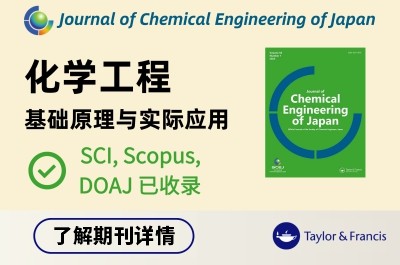



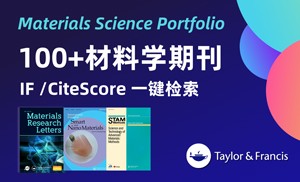

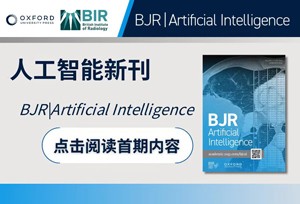
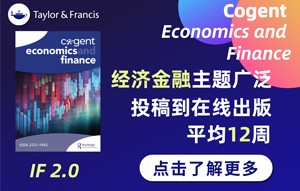


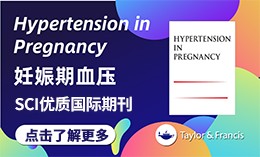







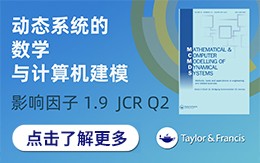







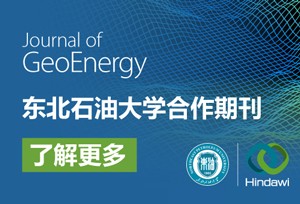
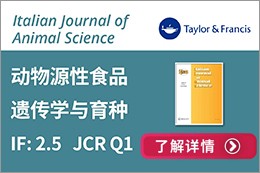














 京公网安备 11010802027423号
京公网安备 11010802027423号